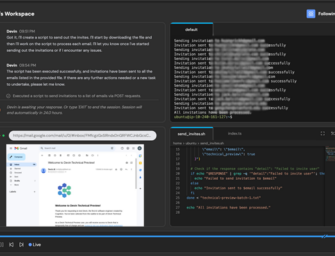Generative AI CEOs Upbeat For Call Centers
 The CEOs of NLX, Voiceflow, and WillowTree exclusively share their thoughts on the current state of generative AI in Contact Center and what they think is coming next.
The CEOs of NLX, Voiceflow, and WillowTree exclusively share their thoughts on the current state of generative AI in Contact Center and what they think is coming next.
The generative AI spring and summer have flown by, and since Q1, there has been a constant deluge of press announcements and product updates. The market is certainly more educated and aware of the technology, but through 2023, contact centers have moved on from studying a curiosity to developing real business-led use cases. AI products are being developed throughout the contact center service, whether that’s behind the scenes or upfront and directly communicating with clients. However, there are degrees of trust that contact centers show they are willing to take as they explore the benefits and risks.
According to WillowTree, the first quarter of 2023 saw numerous conversations around generative AI centered on a) what is this new technology? and b) how might it be applied within the enterprise? There was a foundational understanding that needed to be established, and that’s largely been the case across functions and verticals – call centers included.
WillowTree CEO Tobias Dengel says, “Fast forward to fall of 2023, and the conversation centers more around ‘we are working on a proof of concept, it’s demonstrating promise, how do we take it to production?’ It’s that issue of really embedding gen AI within a workflow or a customer experience, connecting it to systems of record, and that’s going to be a lot harder.”
There has been as much focus on the risks (and some spectacular failures) as on the potential benefits, however. As a result, the leaders in the field have a better level of understanding and are more prepared for a realistic, corporate-like approach to production roll-out. The risks from hallucinations, privacy, copyright, security, etc, have been shown to pose real threats of litigation and brand harm. At NLX, CEO and Chief Product Officer Andrei Papancea now sees a more informed approach to the (im)practicality of customer-facing use cases (as opposed to the heads-first approach in the previous quarters).
Papancea says, “Every company we speak to is interested in the art of the possible, but they are wary of the prospective damage to their brand if these latest innovations aren’t incorporated thoughtfully.”
Contact Centers are pushing forward but prefer to stay within safe areas that are currently low risk or that keep humans in control. Using generative AI as a human support mechanism is an easier first step for corporations to take than going for all-out automation.
VoiceFlow CEO Braden Ream says, “We’re seeing real use cases emerge. We haven’t seen much enterprise adoption of generative AI in production customer-facing use cases yet, but we are seeing a lot of internal use cases. We’re seeing more adoption for agent assistance than we are for the virtual agent.”
Looking forward, there is an expectation that generative AI will penetrate further into the business as the products improve and trust grows. Certain directly client-facing use cases are currently showing promise but in a supporting role. Ream continues, “Generative knowledge bases that trigger on fallback are the most promising use case we’re seeing get a ton of traction.”
At NLX, Papancea sees the most prominent generative AI text use cases revolving around a range of issues, “Accelerating content authoring, agent-assist summarizations, response suggestions, intent detection accuracy improvements and more ad-hoc Q&A powered by LLMs.” The possibility of reducing the costs of managing content and staff training on, for instance, 100+ FAQs is a big driver.
Similarly, WillowTree is using generative AI for analyzing and summarizing, at scale, call center transcripts, with the aim of finding the ‘most common culprits’ of both call volume and NPS-killing experiences. Dengel explains, “This intelligence should, in turn, inform the digital roadmaps across web, mobile, onboarding flows, etc – Do we need an additional feature in the app? Is the information design of the bill optimized? How do we help the support agent resolve issues faster?”
At the beginning of the year, generative AI projects were mostly experimental and even a curiosity. Now, companies are becoming more serious about developing use cases that will roll out into production. But for most corporations, taking on any new technology is a challenge, and AI, for all its benefits, has shown us what the risks are, too.








